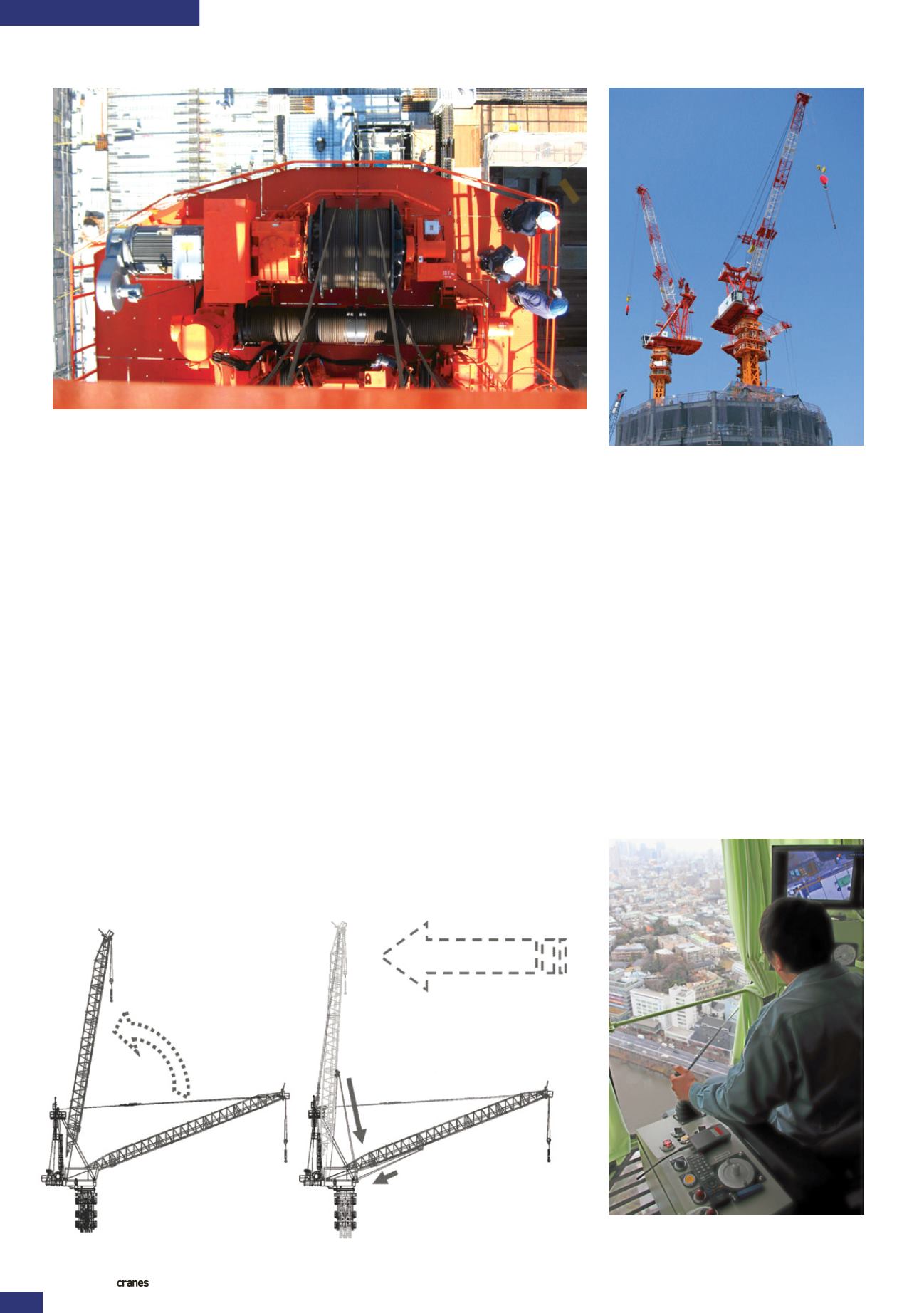
TOWER CRANES
INTERNATIONAL AND SPECIALIZED TRANSPORT
■
SEPTEMBER 2013
22
operates both drums’ ropes so the speed is
doubled, unlike on conventional European-
designed tower cranes.
A further milestone in reducing
overall construction times is the JCC-V
series introduced by IHI in 2000. Major
improvements included reducing the crane
component by 13 to 17 %; speeding up
the erection procedure by using more pin
connections; extending the free standing
tower height from 30 to 45 m; fitting
a patented floating sheave block (FSB)
for optimum accuracy level luffing and
minimising load sway. Inverter-controlled
manufacturing has become a more and
more modular series production process,
with runs of generally at least 10 similar
units. These are designed to meet, as closely
as is reasonably possible, a universal set
of rental company requirements. Tower
crane production in Japan, however,
differs significantly. Annual production
at IHI is between about 10 and 30 cranes.
The company’s Yasuura Works delivers
around 70 to 80 % of all climbing cranes
manufactured in Japan.
While many climbing cranes were
supplied during the “bubble economy”
era in Japan, the market has shrunk since
the early 1990s. Rising popularity of
prefabricated units and steel structures
being used for high rise building
construction has made the 500 to 700
tonne-metre capacity class the best seller,
according to Ito Tadashi, IHI overseas
sales department manager. For apartment
building projects, where there is more
work with precast concrete elements, the
300 tonne-metre class crane is in demand.
For 2013 IHI secured contracts of 12 new
units and, during
IC
’s visit in February,
three cranes were in fabrication while a new
prototype in the 500 tonne-metre class was
on the test pad.
Market variation
In contrast to Europe, where tower rental
crane companies are dominating the
market, in Japan many cranes are designed
in close relationship with the customer.
A remarkable improvement of the JCC
series cranes was the 1969 introduction
of a safe, easy and fast hydraulic climbing
system. It was for the JCC200H and
followed the tricky conventional wire rope
operated climbing mechanism used until
then. In addition, the constant 4 line fall
operation mode become standard. That
meant no risk of the hook rope twisting due
to a tandem hoisting drum where one hook
rope is stored as S-laid on one drum and
the other being Z-laid. The hoisting motor
On the prestigious Tokyo Skytree Tower project
customised JCC-V720AH cranes worked under
extraordinary site conditions. Note the large
floating sheave blocks and the ropes leading
to the sheave platform under the boom base
section for the jib restriction device
View from the A-frame head on the machinery deck of the JCC-700K, showing the typical tandem
drum design of the large hoisting winch behind the luffing winch
Functional principle of the
patented jib restriction device
Inside the cabin of the JCC-V700 is the large
monitor for the hook camera on the right side


